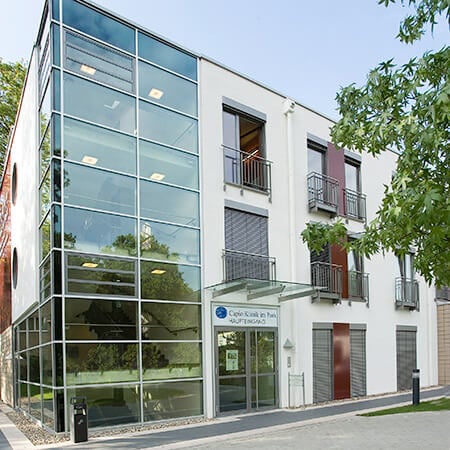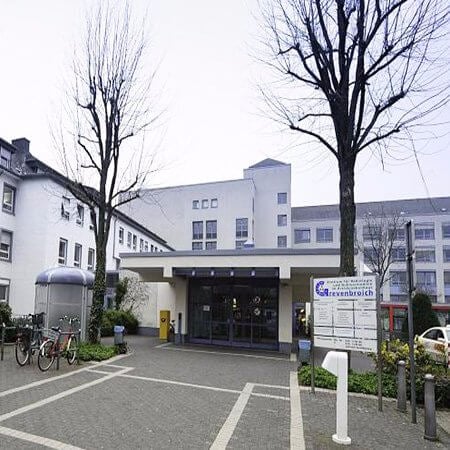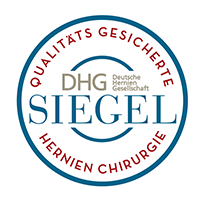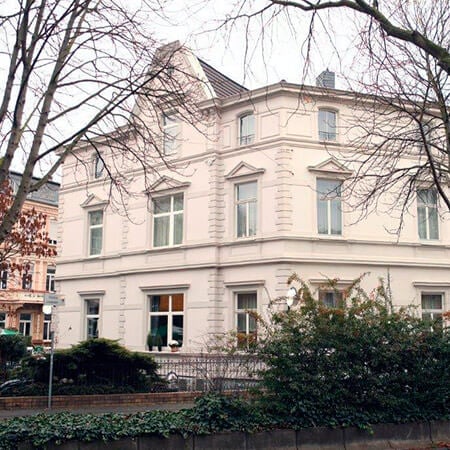Deep vein thrombosis (DVT) is a life-threatening disease that can lead to pulmonary embolism. Blood clots most often develop in the veins of the legs. They can break off, enter the pulmonary artery system and block gas exchange. For the treatment of deep vein thrombosis in Germany, conservative and surgical methods can be used. Should surgical treatment be required, an operation will be performed using a minimally traumatic endovascular technique, so patients do not need long-term rehabilitation.
Content
- Who may need treatment?
- Conservative treatment
- Systemic thrombolysis
- Endovascular treatment
Doctors usually provide conservative treatment with anticoagulants. In some patients, endovascular thrombus removal or thrombus dissolution with fibrinolytics can be performed. In the future, the following maintenance treatments may be required: anticoagulants, implantation of an inferior vena cava filter, or compression stockings.
You can undergo your treatment at one of the following hospitals: Capio Clinic im Park for Innovational Phlebology Hilden, Hospital St. Elisabeth Grevenbroich, or Clinic Dr. Brenner Bonn.
The Booking Health company will take care of the organization of your trip. Our employees will recommend a clinic and a treatment method, organize a quick appointment, help you to get to the clinic, take care of your accommodation and interpreting services, and, if necessary, help you to buy medicines to continue your maintenance treatment in your native country. A personal medical coordinator will be in constant contact with you.
Who may need treatment?
Depending on the localization of thrombi development, there are distal and proximal thrombosis. Distal deep vein thrombosis is located below the knee, and this condition does not require any treatment. The proximal form of the disease develops above the knee and poses a threat to life. Deep vein thrombosis causes thromboembolism, which is the third leading cause of cardiovascular death after a stroke and a myocardial infarction.
With deep vein thrombosis detected, the treatment is carried out as soon as possible. The risk of pulmonary embolism in this disease is 12% in the first month after a diagnosis, and the risk of death is 6%. If the thrombus was removed or dissolved, many patients require additional prophylactic treatment, since the probability of recurrent deep vein thrombosis is 25%.
Conservative treatment
Thrombi can be dissolved. Patients receive low molecular weight heparin under the control of INR (international normalized ratio). This is a calculated indicator, which is determined by the results of a coagulogram (blood clotting test). In the future, the treatment regimen will be determined individually. Therapy options are as follows:
- vitamin K analogs for 3 months;
- cancer patients are treated with low molecular weight heparins for six months;
- doctors in Germany use a factor Xa inhibitor, which does not require any INR control;
- with a significantly decreased number of platelets in the blood, the anticoagulant fondaparinux is used.
The treatment of deep vein thrombosis in Germany is not only successful in most cases, but also safe. Doctors carefully monitor the doses of drugs with the help of laboratory tests to avoid excessive blood "thinning", because it is fraught with bleeding.
Systemic thrombolysis
Anticoagulant therapy can dissolve blood clots but takes several months to be effective. This can be done faster with the help of systemic thrombolysis. Doctors inject fibrinolytics into the vein, which dissolves the backbone of the blood clot.
Indications for this treatment method are as follows:
- iliac-femoral deep vein thrombosis, which is manifested by clinical symptoms;
- thrombosis of any localization, if the symptoms persist for more than 2 weeks;
- no risk factors for bleeding.
The treatment method is simple and it is available in almost any country in the world. However, there is a threat of bleeding, including intracranial hemorrhage. Therefore, endovascular procedures are increasingly being used instead of systemic thrombolysis in Germany.
Endovascular treatment
Endovascular treatment requires special equipment, so it is available in specialized centers only. The procedure is done from the inside of the blood vessels and under the guidance of imaging diagnostics. A blood clot can be dissolved or removed, and steps can be taken to reduce the risk of repeated clotting. Doctors can use the following treatment methods:
- mechanical percutaneous thrombectomy or thromboextraction, which involves blood clot removal;
- catheter-directed thrombolysis involves blood clot dissolution by injecting fibrinolytics into it (unlike systemic thrombolysis, this procedure does not cause any bleeding).
These interventions are performed within 5 days after the formation of a blood clot. In the future, a preventive procedure can be performed: implantation of an inferior vena cava filter.
You can undergo your deep vein thrombosis treatment at one of the German hospitals. You are welcome to use the Booking Health website to find prices, compare them and make your treatment appointment at the best price. The specialists from the Booking Health company will help you to choose the most suitable clinics in Germany and organize your trip.
Authors:
The article was edited by medical experts, board-certified doctors Dr. Nadezhda Ivanisova and Dr. Sergey Pashchenko. For the treatment of the conditions referred to in the article, you must consult a doctor; the information in the article is not intended for self-medication!
Sources:
Centers for Disease Control and Prevention
Science Direct
UpToDate











